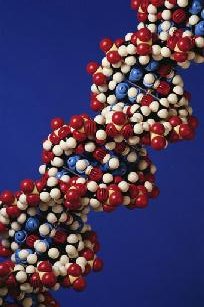
Nature’s own data storage material – the DNA molecule – may lend a hand to the information technology industry as it faces demands for more compact data processing and storage circuitry. Richard Kiehl, from the University of Minnesota, has used DNA’s ability to assemble itself into predetermined patterns to construct a synthetic DNA scaffolding with regular, closely spaced docking sites that can direct the assembly of circuits for processing or storing data. The scaffolding has the potential to self-assemble components 1,000 times as densely as the best information processing circuitry and 100 times the best data storage circuitry now in the pipeline. Since first publishing details of their innovation in 2003, the research team has now refined the technique to allow more efficient and more versatile assembly of components. Details of the new work appear in Nano Letters.
“There’s a need for programmability and precision on the scale of a nanometer – a billionth of a meter – in the manufacture of high-density nanoelectronic circuitry,” said Kiehl. “With DNA scaffolding, we have the potential for arranging components with a precision of one-third of a nanometer. In a standard silicon-based chip, information processing is limited by the distance between units that process and store information. With DNA scaffolding, we can lay out devices closely, so the interconnects are very short and the performance very high.”
The new procedure also lets the team add any one of various nanocomponents at a later time, depending on what is needed for the application. The result is a more perfect scaffolding, better and more regular attachment of electronic units, and more diversity in the types of units and the types of circuitry that can be made. “We can now assemble a DNA scaffolding on a preexisting template, such as a computer chip, and then – on the spot – assemble nanocomponents on top of the DNA,” said Kiehl. The nanocomponents can hold electrical charge or a magnetic field, either of which would represent a bit of data, and interactions between components can act to process information. Circuitry based on regular arrays of closely spaced components could be used for quickly recognizing objects in a video image and detecting motion in a scene – slow and difficult tasks for conventional computer chips.












Comments are closed.